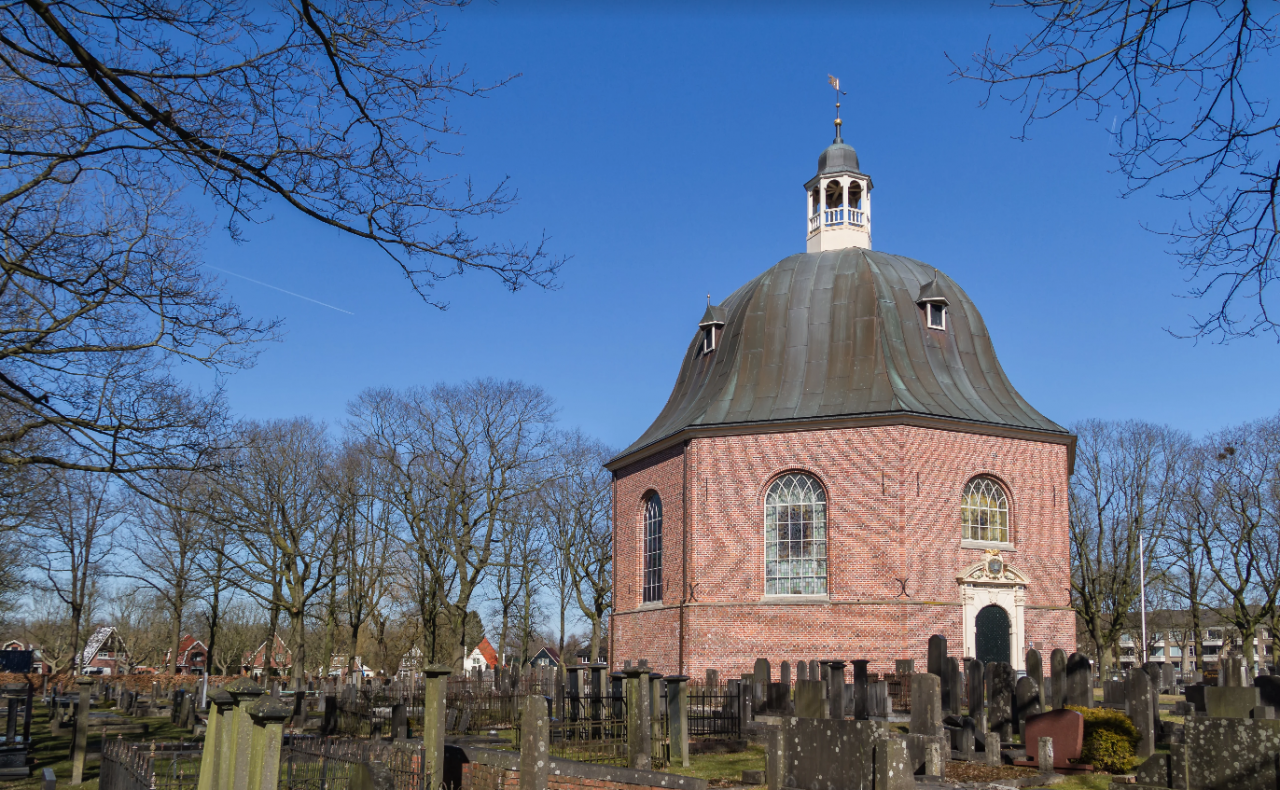Koepel Church

In 1653, city architect Coenraed Roelfs was commissioned to build a church in Sappemeer. It became an octagonal church with a copper domed roof. In 1791, the decayed domed roof was replaced by a gable roof in the form of a Greek cross.
About this building
When, two centuries later, this roof also threatened to collapse, a copper domed roof was placed on the church again. During this restoration one had to take into account the imposing organ that was placed in the church in 1875, then still in possession of a high-rise cross-roof.
Because of a sharp decline in church attendance in 2006 it was decided to transfer the church to the Stichting Oude Groninger Kerken and since that time Stichting De Koepelkerk Sappemeer has been operating for this 'fraiche achtkant kerk'. In the Koepelkerk one can marry, remember, present, talk, listen, learn, make music and sing.


